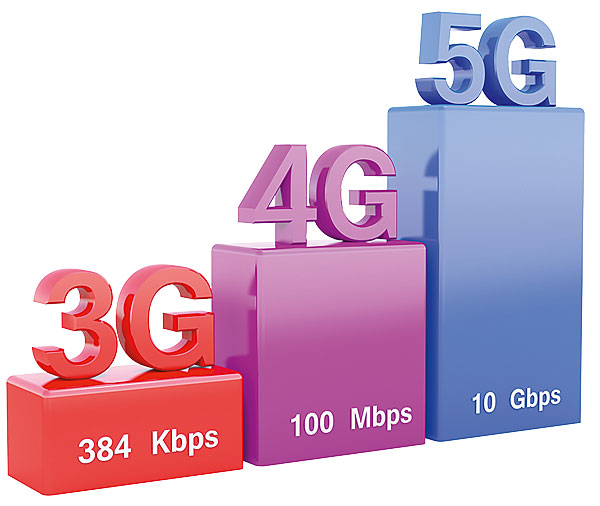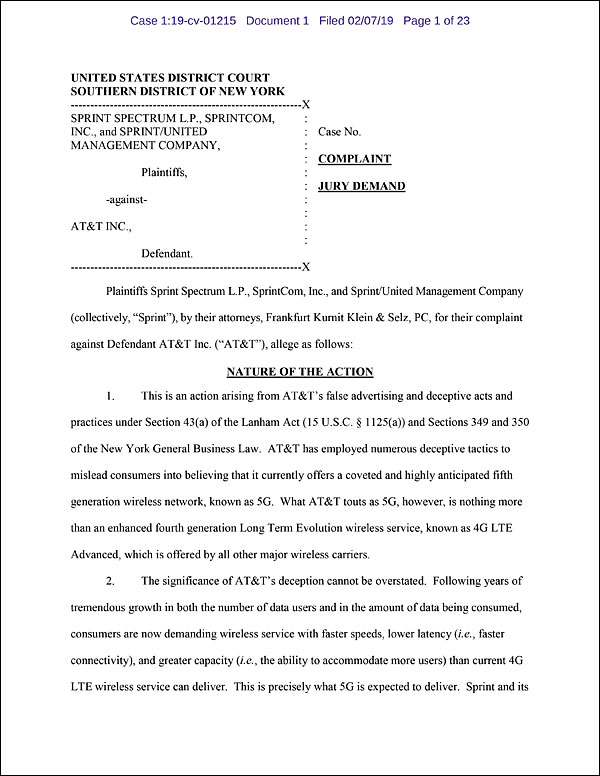Why 5G Matters For Hi-Fi Page 2

The techniques 5G relies on to modulate the radio carrier wave, and push ever closer to the brick-wall capacity limits defined by Claude Shannon of Bell Labs in 1948, are fiendishly complicated. Suffice it to say they include the use of OFDM (Orthogonal Frequency-Division Multiplexing) to spread data across separate narrowband channels at different frequencies, as is already the basis of digital radio; 256 QAM (Quadrature Amplitude Modulation), which offers 256 code combinations from eight-bit symbols; and LDPC (Low-Density Parity-Check), for robust error correction.
Frequencies that are higher need focused beaming in chosen directions, which is why microwave and satellite systems use big dishes. But 5G has to work without dishes. The enabling technology is called MIMO, Multiple-Input Multiple-Output, and it builds on the principles used for flat satellite aerials, such as the British Satellite Broadcasting's ill-fated Squarial design.
The phases of signals sent to a chess board of transceiver cells are juggled to concentrate a wireless beam and steer it horizontally and vertically. This increases the antenna gain and helps compensate for signal loss caused by the atmosphere at higher frequencies. The challenge is to make the MIMO antennae smaller, by using chip fabrication techniques. They are already down to 10mm square, and are sure to get smaller.
Command Prompt
5G has also been designed from the ground up to offer low latency, which means a reduction in the time it takes for a local device to send data to a remote system, and receive back a reliable response. Audio buffs encounter latency when trying to listen to a TV via wireless headphones and lip sync is lost.

Current network lags are around 20 milliseconds or more whereas 5G promises around 1 millisecond. This means that home equipment can be cheap and dumb, with less computer processing inside the box, and the intelligence needed to do clever things mainly in a remote control centre. Response to music play, pause and track-change commands sent from a home server to a remote music streaming service can be quicker. Dumber hi-fi means more space for audio circuitry and less interference from computer circuit hash, not to mention less software and firmware updating with 'Please Wait' messages.
Slice Is Nice
When Matt Stagg, a Director of Strategy with BT, talked to the DTG seminar, he told how low latency had become a key requirement for 5G: 'The automotive industry needs it for braking autonomous [self-driving] vehicles, so that cars stop at a red light; if it hadn't been for the auto industry, latency would have been 10ms.' Others in the industry say the push to reduce latency came from remote surgery, where a doctor in one continent controls operating table scalpels in another.
Whatever the prime mover, 'low latency is expensive to deliver because of component cost and network design,' cautions Stagg. 'But not everyone needs it. Different equipment has different requirements. The big difference between 4G and 5G is that whereas with 4G everyone gets the same, 5G lets the operator slice the network into Virtual Networks which offer different configurations, some with low latency, some not.'

Think of it as the way some popular 4G networks, like Virgin, Giff Gaff and Tesco, are provided by the major networks like O2, but completely independently. 5G slicing is far finer. At consumer level it will let a few subscriber pay a premium for glitch-free hi-res, while others pay less for more iffy MP3, or downloading over as long as it takes. At professional level, Virtual Networks will help outside broadcast crews send pictures and multichannel hi-res audio from heavily crowded events such as the Glastonbury Festival.
Setting Standards
Recalls Simon Fell, former Director of Technology and Innovation at the European Broadcasting Union (EBU): 'I was in Munich when there was a series of attacks and as more and more people used their phones, the network collapsed. News crews with 4G equipment could not communicate and they had to bring in a satellite truck. 'With "sliced" 5G, the broadcasters would not have been affected by the consumer overload because they would not be competing for bandwidth.'

The bedrock industry standard for 5G is called 5G NR, for New Radio. Release 15 was agreed in late 2017 by 3GPP, the 3rd Generation Partnership Project, which is supported by all the major telecommunications standard-setting organisations. Release 16 is due this year and Release 17 due in 2020. But these standards deal only with 'enhancements' – the basic essentials are now solid.
As with many new technologies, 5G is falling foul of opportunists who sell hardware before final standards are set and the silicon is available. The first '5G' products turned out to be 4G, modified to a proprietary standard, so be wary of marketing talk of '5G Wi-Fi', which means bog-standard Wi-Fi in the 5GHz band, not Wi-Fi using 5G technology.
And question marks hang over how the promises for 5G will translate to practical experience. In the US Tom Wheeler, who until recently headed the Federal Communications Commission, is now warning that 5G networks may not be as hacker-proof as they could and should be – because the race for speed has taken precedence over concern for cybersecurity.

And how will MIMO cope with delivering 5G to cars in cities and on rustic roads that bedevil normal radio, TV and mobile phone reception? In and around Hereford, different wireless networks work in different places, as if separated by brick border walls. In London new and taller buildings continually rise to block, or spuriously reflect, wireless signals. In theory 5G with MIMO antennae should steer wireless signals past tall buildings, but only time will tell whether it really can.
Good News
How 5G develops will depend on how much money the networks spend on new 5G transmitter sites. And that will depend in part on how much we are willing to pay for 5G services.
But to cut to the chase, 5G technology could and should be very good news for the hi-fi industry. Assuming, of course, the telecoms industry does not manage to screw it up...

























































